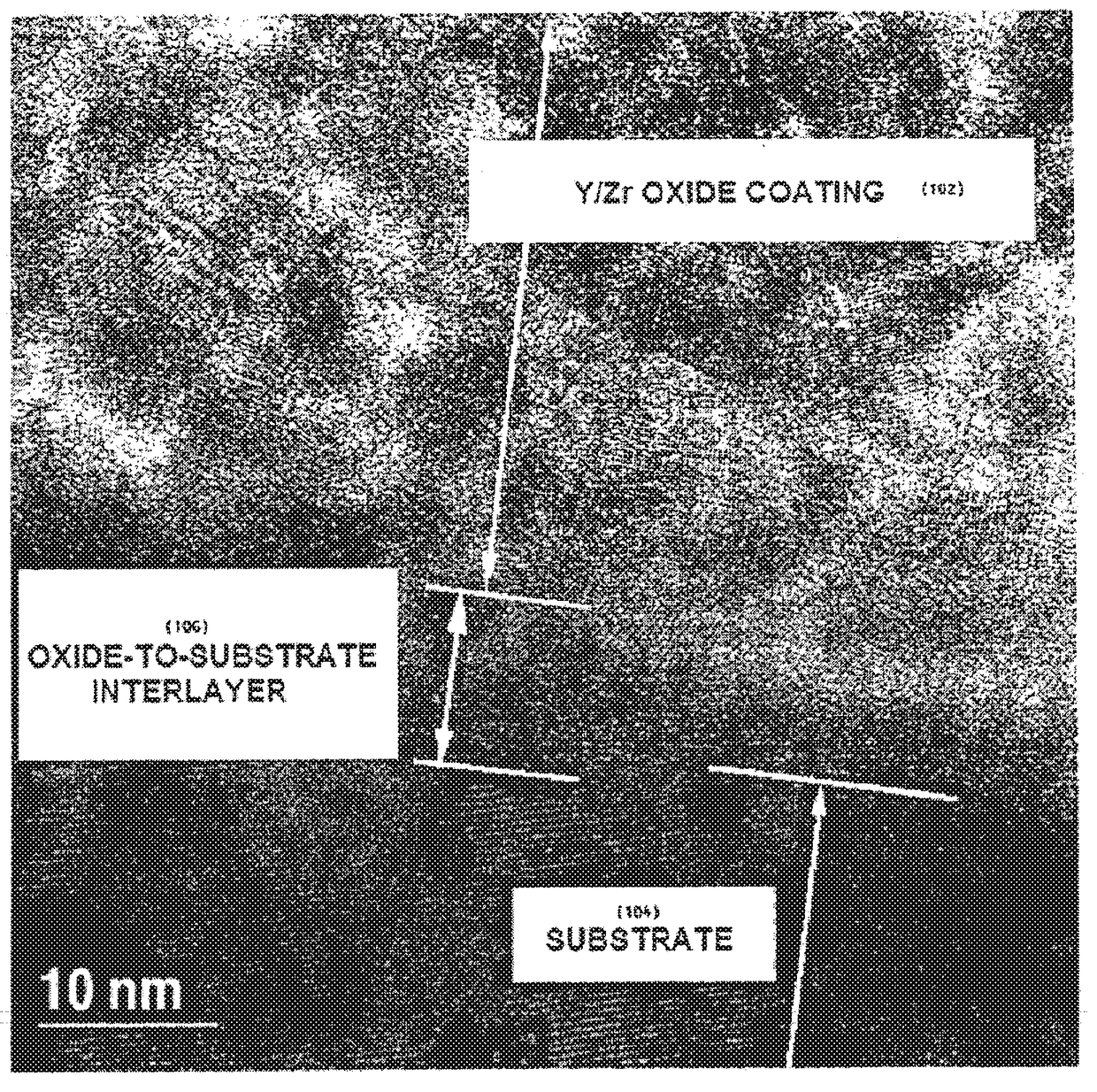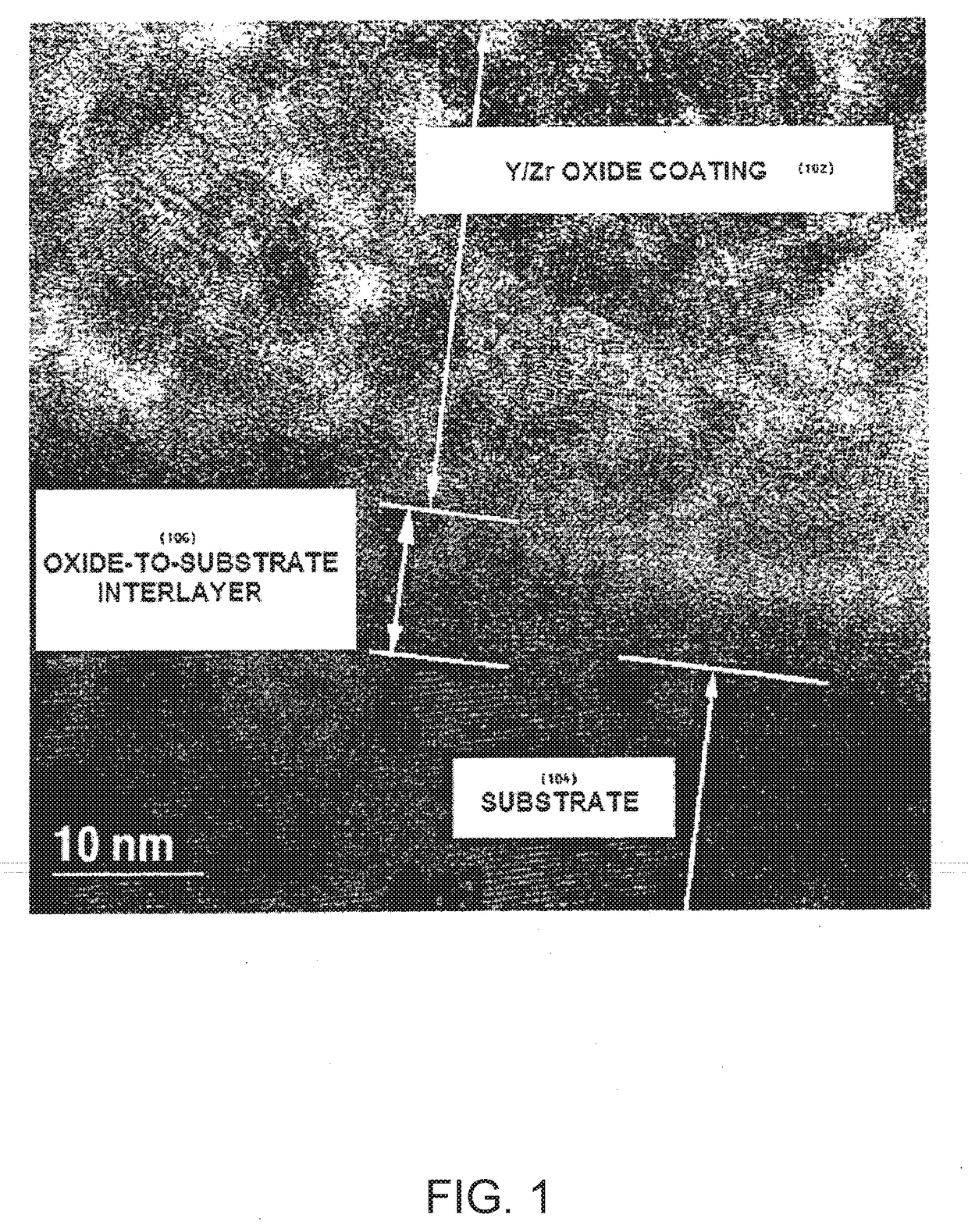Solid Oxide Fuel Cells, Electrolyzers, and Sensors, and Methods of Making and Using the Same
a technology of solid oxide fuel cells and electrolyzers, applied in the field of electric energy systems, can solve the problems of high cost of exotic materials for solid oxide fuel cells, cost prohibitive use in certain applications, and cracking at the interfaces of layers as well as within layers, and achieves the effect of reducing operating temperatures and better tolerant of higher temperatures
- Summary
- Abstract
- Description
- Claims
- Application Information
AI Technical Summary
Benefits of technology
Problems solved by technology
Method used
Image
Examples
example 1
rode
[0255]LSM planar electrodes can be purchased or formed as follows. LSM powder, available from American Elements (www.AmericanElements.com) is mixed with 5-10% wt. corn starch, compression molded into a flat disk shape not less than about 1 / 16th of an inch, and sintered at 1200° C. for 30 minutes in air. The resulting porous material is suitable for use as a cathode in a fuel cell embodying aspects of the present invention.
[0256]A two-inch diameter, approximately 2 mm thick LSM disc having an average pore size of about 15 μm and porosity of about 30% was formed in accordance with the foregoing procedure and polished with diamond paste to a roughness of approximately 1 μm. The polished surface was held against a 0.1 L volume vacuum chamber opening with an O-ring, and a vacuum was applied to measure the rate at which vacuum is lost through the porous electrode. A pressure of no less than 1200 mtorr was measured in the vacuum chamber, whereupon a valve between the vacuum chamber and...
example 2
e Layers of YSZ Electrolyte with YSZ Nanoparticles and Powder
[0257]A viscous composition was made as follows. First, a liquid composition containing yttrium (III) 2-ethylhexanoate (15 molar % based on Y) and zirconium (IV) 2-ethylhexanoate (85 molar % based on Zr) was made. Then, one part of the liquid composition by weight was mixed with one part of YSZ nanoparticles having an average particle size of 50-100 nm; one part of the liquid composition was mixed with one part of YSZ powder having an average particle size of about 1 μm; and one part of the liquid composition was mixed with one part of YSZ powder having an average particle size of about 45 μm. All three mixtures were combined to form the viscous composition.
[0258]The LSM electrode from Example 1 was wetted on the polished surface with the viscous composition. The wet electrode was placed in a room-temperature electric furnace in air and the oven was heated to 450° C. Once the oven reached 450° C. in about 15 minutes, the o...
example 3
t Layers of YSZ Electrolyte
[0260]The room-temperature electrode of Example 2 was coated repeatedly with a liquid composition containing yttrium (III) 2-ethylhexanoate (15 molar % based on Y) and zirconium (IV) 2-ethylhexanoate (85 molar % based on Zr) (and no nanoparticles or powder). After each application of the liquid composition, the electrode was heated and cooled as described in Example 2, and tested for vacuum loss as described in Example 1.
TABLE 1Vacuum Loss DataNumber ofPressureTime to EqualLeak RateCoats(mtorr)Pressure (s)(L*Torr / s)01200n / an / a1800n / an / a275071.09E+013675233.30E+004600302.53E+005550253.04E+006600302.53E+007500332.30E+008400471.62E+009300839.16E−01102601057.24E−01112001325.76E−01121551804.22E−01131452253.38E−01141501804.22E−01151456451.18E−01161307051.08E−011712032402.35E−021811028802.64E−02199333002.30E−022070103207.36E−03
PUM
| Property | Measurement | Unit |
|---|---|---|
| size | aaaaa | aaaaa |
| thickness | aaaaa | aaaaa |
| temperatures | aaaaa | aaaaa |
Abstract
Description
Claims
Application Information
 Login to View More
Login to View More - R&D
- Intellectual Property
- Life Sciences
- Materials
- Tech Scout
- Unparalleled Data Quality
- Higher Quality Content
- 60% Fewer Hallucinations
Browse by: Latest US Patents, China's latest patents, Technical Efficacy Thesaurus, Application Domain, Technology Topic, Popular Technical Reports.
© 2025 PatSnap. All rights reserved.Legal|Privacy policy|Modern Slavery Act Transparency Statement|Sitemap|About US| Contact US: help@patsnap.com



